My Wild Garlic Dahl is packed full of flavour. This hearty split yellow pea stew is inspired by spices often found in Indian cuisine and infused with my favourite foraged herb, wild garlic.
What is dahl?
For this recipe I've been inspired by two of my favourite things, the mild aromatic flavour of wild garlic and earthy channa dahl. But you may be asking yourself, what actually is dahl?
Dahl (sometimes spelt dal, daal, or even dhal) can actually mean two different things. Sometimes the term is used to refer to split pulses such as lentils, peas, chickpeas or different types of beans. But, it can also mean a soup or stew made with pulses.
For this recipe I am using "dahl" to refer to the fact that this dish is a hearty stew made either with split chickpeas or yellow split peas.
Which split pulse is best?
I've tasted dahls over the years which use a wide range of different pulses. I particularly love mung dahl (made from mung beans) and tarka dahl (which is dahl that has been flavoured with spices that have been heated in oil or ghee). Every dahl is different and each pulse has its own character and flavour which makes each dish unique. So in short, no pulse is best. They are all special in their own way. This recipe has been inspired by one of my favourite dishes - channa dahl. Channa dahl is made with split chickpeas (or garbanzo beans) which is where the inspiration for this dish comes from.
In the recipe below I've said you can use either split chickpeas or yellow split peas. I've tried this recipe with both and they work equally well. But I've found that, in my areas at least, yellow split peas are easier to come by in supermarkets which is why I wanted to give you the option.
For a really helpful guide on the cooking times for different split peas, lentils and other pulses check out this blog post which has a handy breakdown of the different cooking times of a wide range of pulses used in Indian cooking.
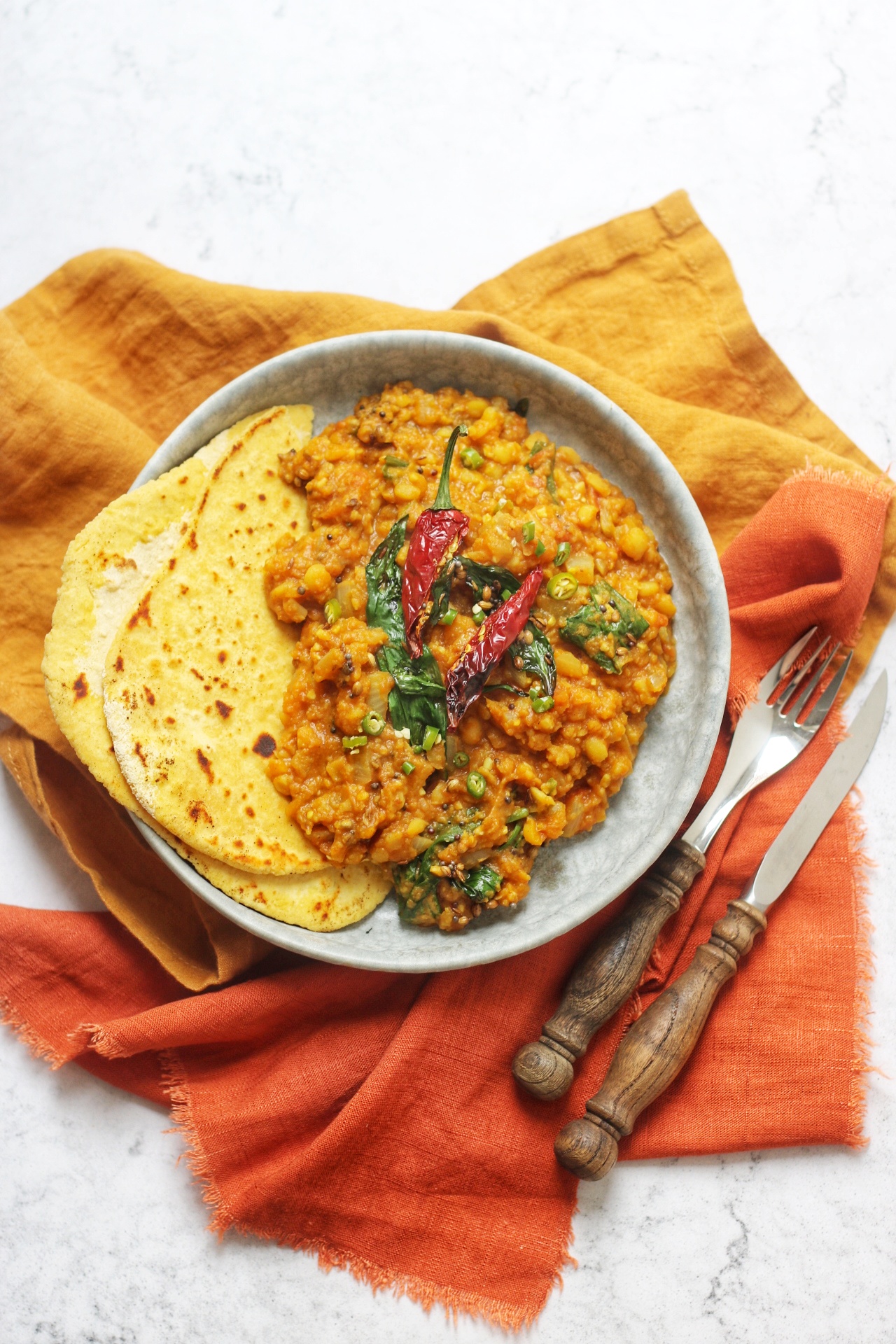
How to cook dahl
The recipe for my Wild Garlic Dahl broadly follows the following steps:
- Cook the onions, garlic and chilli in mustard oil to release their aromas and soften the onions;
- Next add tomatoes and cook until you see the oil separating;
- Stir through your dried spices;
- Add in your split peas / split chickpeas and let them simmer;
- Temper your remaining spices and some of the wild garlic leaves;
- Stir through the remaining wild garlic until wilted.
Cooking pulses
There's a lot of advice on the internet about washing, sifting and soaking lentils and other pulses before you begin cooking.
- Washing is usually recommended as a way of reducing flatulence caused be pulses! If I'm honest, I don't always wash mine and I can't say I've noticed the difference.
- Sifting is recommended as a way of making sure there are no stones or other debris in with the lentils. Whether or not you do this will depend on where you purchase your lentils from and if you're confident the bag only contains lentils.
- Soaking is a little more tricky as it's recommended for some pulses and not others so always best to check the packet. Soaking is not necessary for this recipe - more on that below.
Cooking this Wild Garlic Dahl (and any dahl for that matter) is a real labour of love. Dried pulses taste best when they have been cooked low and slow. For that reason this recipe can be made in the slow cooker if you wish. You can soak your split peas or split chickpeas before you start cooking but it's not necessary. If you do decide to soak them you will be able to reduce the cooking time slightly.
If you find that your pulses aren't getting soft when making dahl there are two likely culprits:
- You may be using very old pulses. These take much longer to get soft so always use fresh pulses where you can.
- You may have added salt or something acidic to the cooking water too early. Whilst we want our pulses to take on lots of flavour, seasoning the water can stop the pulses from becoming soft and tender.
Adding herbs and spices
Herbs, spices and other aromatics are added at different stages in this recipe. That's because the way in which they are cooked and added to the dish has an impact on the flavour they add.
The onions and garlic added at the start at the base of the dish and upon which all the other flavours are added. They have a sweet, mellow flavour by the time the dish has finish.
The dried spices add another layer of flavour to the dish. By adding these just before the split peas or split chickpeas they act as a seasoning to make sure the dahl is full of flavour. There's nothing worse than a bland split pea or split chickpea!
We also add tempered spices. Tempering is a method that is often used in Indian cuisine. To temper spices means to heat them in hot oil or ghee before adding them to the dish. It's done to give the spices the chance to release all of their flavour and aroma. It's the best way to get the most out of your spices. As I'm vegan I don't temper my spices in ghee, instead I use an oil that can handle high heats like sunflower oil. (You could also use canola oil). Whichever oil you choose you should make sure it's a mild flavoured oil as you don't want to ruin all the hard word you are doing releasing the flavours of the spices by coating them in a strong flavoured oil.
I like to add some of the tempered spices to the dish right at the end, almost as a garnish, especially the tempered wild garlic as they get wonderfully crisp and I love having that texture on top.
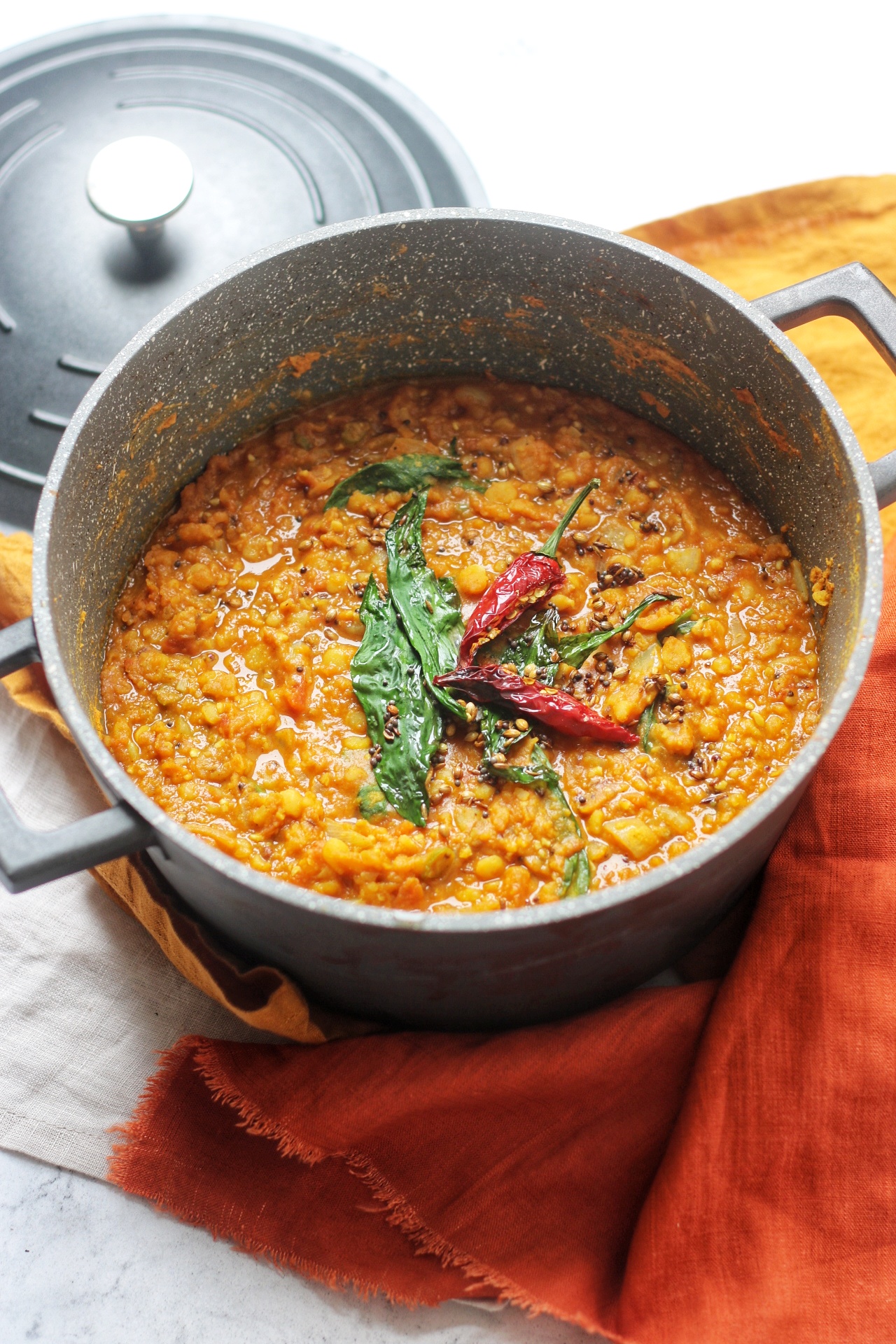
What is wild garlic?
Wild garlic is a plant native to Britain that often grows in shady spots of woodland. You may know it by one of its other names (like ramsons). It grows from late March when it's long green leaves start to appear on woodland floors. But, it is easiest to spot from April until June when it has delicate star shaped flowers. The flowers are beautiful and can be added to salads for a mild garlic flavour but it really is the leaves we want for this particular recipe.
The leaves have a wonderful garlic flavour. I find the youngest, most delicate leaves have the strongest flavour. Wild garlic leaves are super versatile, and pesto is one of the most popular dishes to make but you can also add the leaves to scones, stir fries and salads too. When cooked, they wilt like spinach but with a mild garlic flavour which makes them perfect for adding to a dish like this.
What can I use instead of wild garlic?
If I'm honest, there's not a perfect substitute. Add baby spinach will give you that wonderful flash of green and the right texture. Some extra minced garlic in the first step and some garlic powder added along with the other dried spices will up the garlic flavour. You can freeze wild garlic so next time you pick some, make sure you pick extra for your freezer. Then you can enjoy this Wild Garlic Dahl all year round.
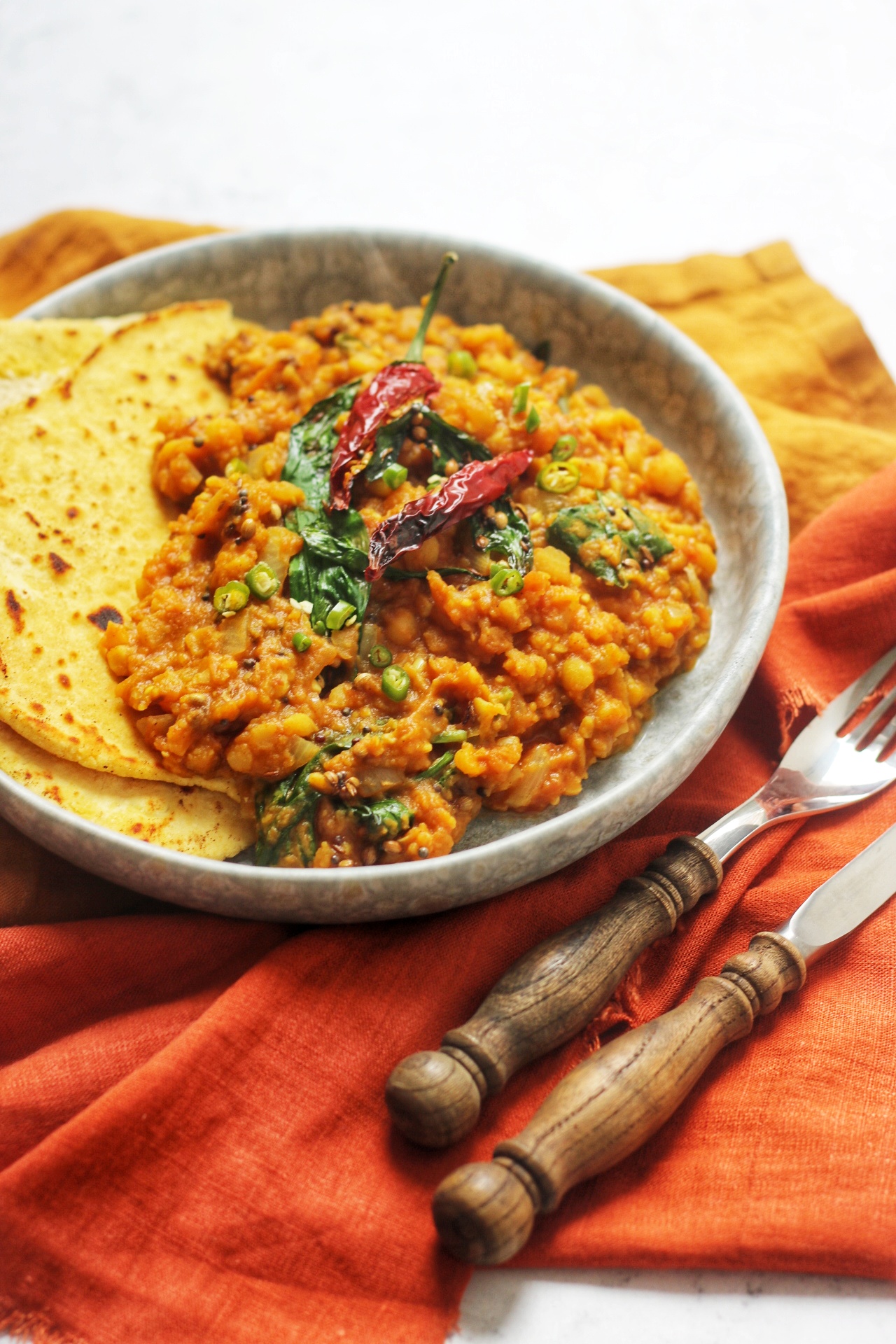
The recipe
Now we've covered the basics, let's get to making the recipe for my Wild Garlic Dahl!
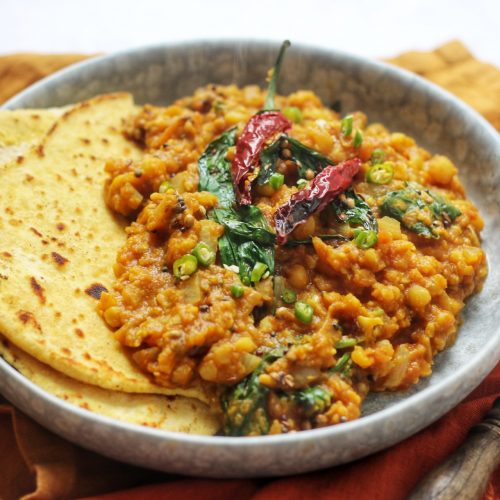
Wild Garlic Dahl
Ingredients
- 250 g yellow split peas or split chickpeas
- 1 tablespoon mustard oil
- 1 onion diced
- 4 cloves garlic minced
- 2 inches root ginger minced
- 2 green chillies finely chopped
- 400 g tinned tomatoes
Dried spices
- ½ teaspoon turmeric
- 1 teaspoon chilli powder
- 1.5 teaspoon ground cumin
- 2 teaspoon ground coriander
- 1 teaspoon garam masala
Spices to temper
- 1 tablespoon vegetable oil or canola or sunflower oil
- 1 tablespoon cumin seeds
- 1 tablespoon coriander seeds
- 2 dried red chillies
- 1 handful wild garlic
Instructions
- Rinse the yellow split peas then add to a saucepan along with 1 litre of water. Bring the water to a boil and then turn down the heat until it is at a simmer and cook for 25 minutes.
- After 25 minutes check that the split peas have begun to soften, keep the heat low and begin preparing the rest of the dish.
- In a large pan, heat 1 tablespoon of mustard oil and add the diced onion and cook for 8 -10 minutes until then have begun to soften. Next add the minced garlic, minced ginger and sliced fresh green chillies and cook for 2-4 minutes until they have begun to release their aromas.
- Add the tinned tomatoes to the pan and cook until the oil has begun to separate from the juices of the tomato.
- By this point the split peas should be soft (if they are still a little hard that's not a problem as they will continue to cook in the sauce). Drain the split peas and add them to the pan along with the dried spices. Taste and add salt as needed.
- Keep the pan on low and let the split peas absorb the flavours of the sauce.
- In the meantime, heat 1 tablespoon of vegetable oil in a small pan and add all of temper spices *except* the wild garlic. The oil should be piping hot and the seeds may pop and crack.
- Add just a few of the wild garlic leaves to the tempering pan and cook until they are crisp before taking the pan off of the heat.
- Stir the uncooked wild garlic leaves into the dahl where they will wilt. Pour over the tempered spices and your dahl is ready to serve.
Nutrition
I like to serve this dahl as a main dish with naan or chapatis on the side to mop up the sauce. This recipe will produce enough to serve 4 people as a main course but will stretch to 8 if served as a side.
More wild garlic recipes
More Indian inspired recipes
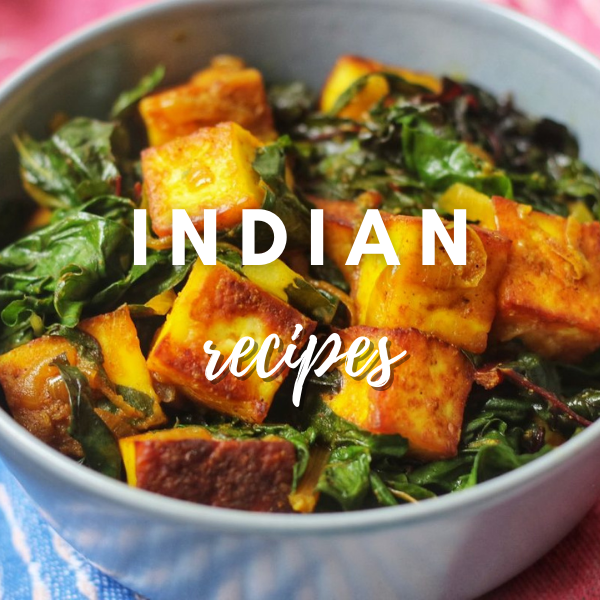
Check out my global recipe archives for more recipes inspired by different cuisines and cultures from around the world.

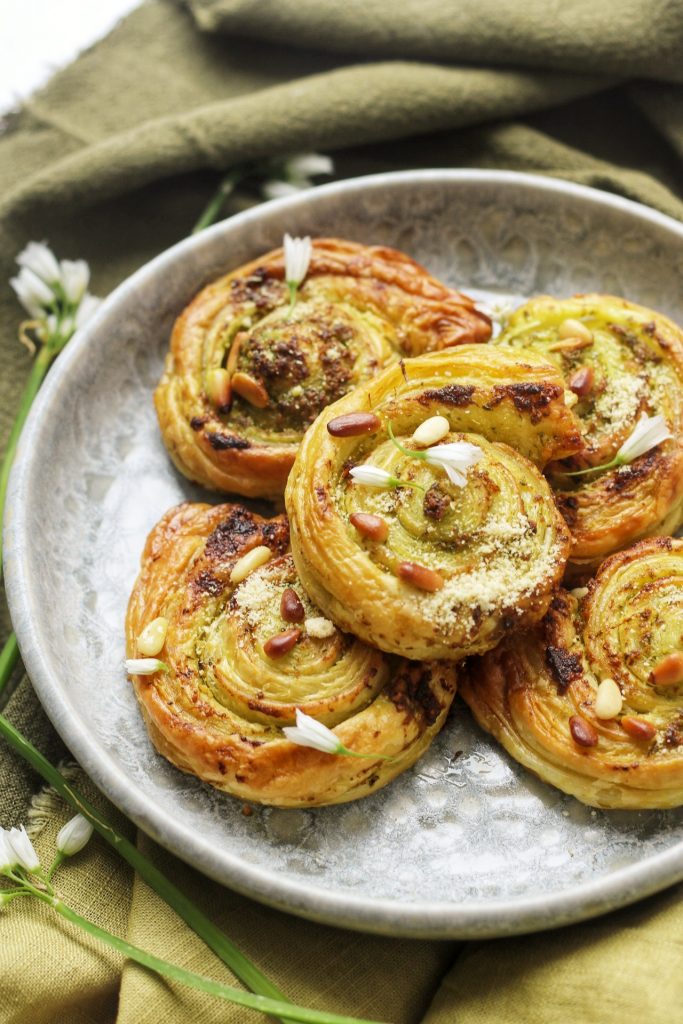
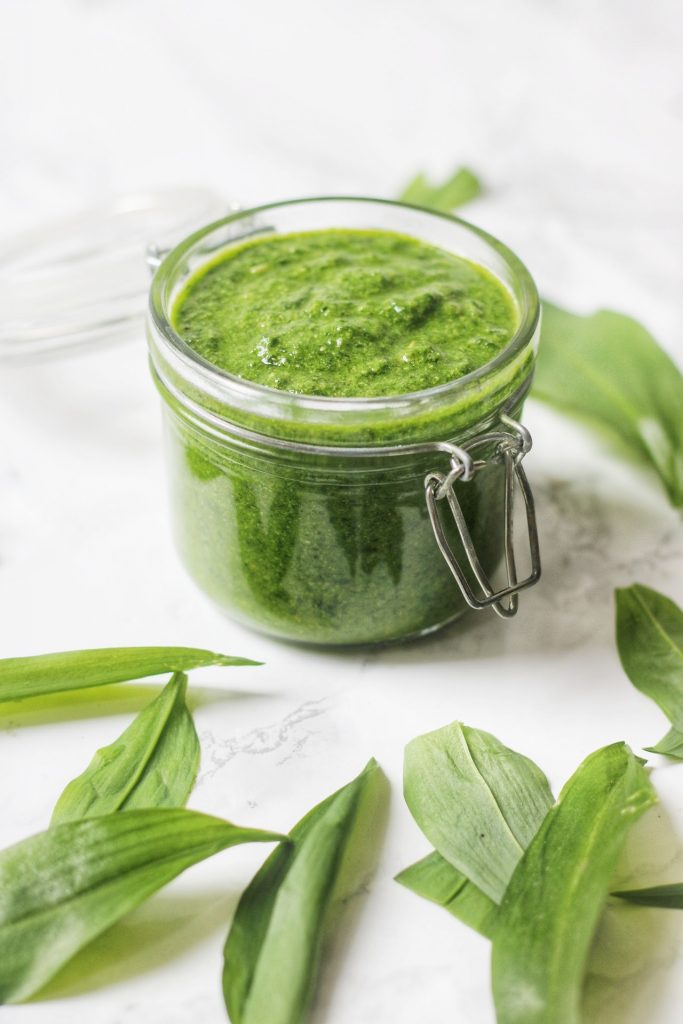
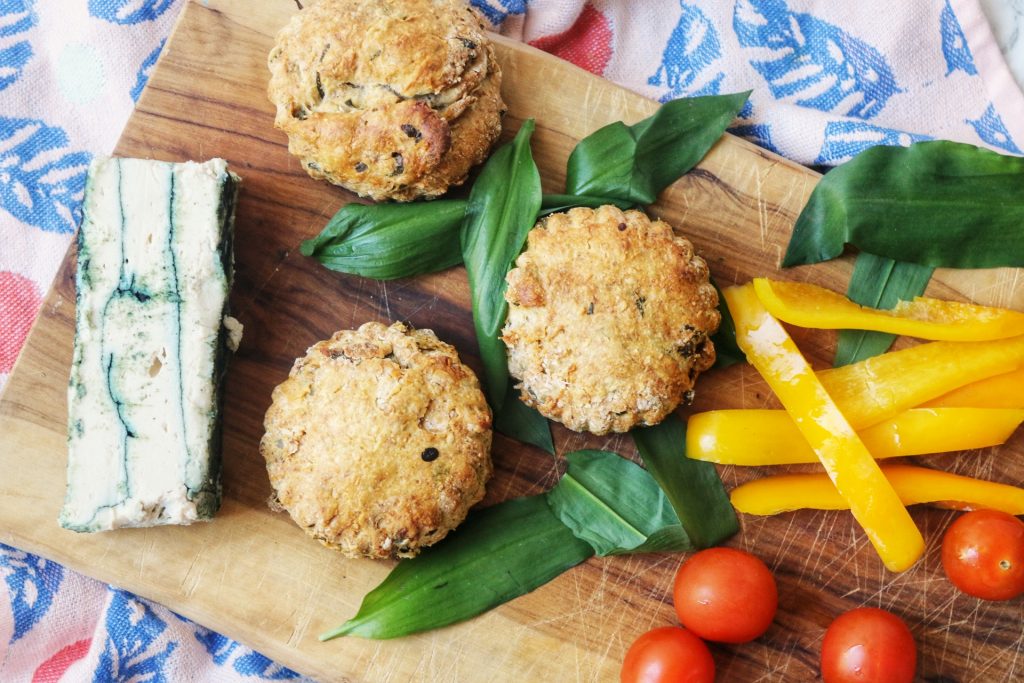

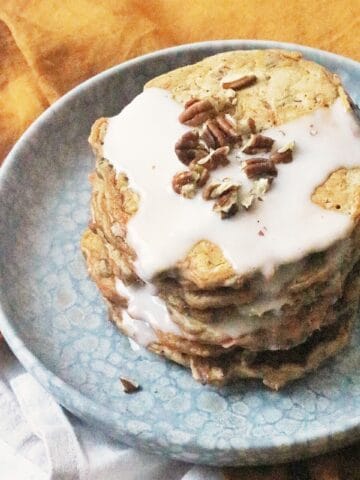
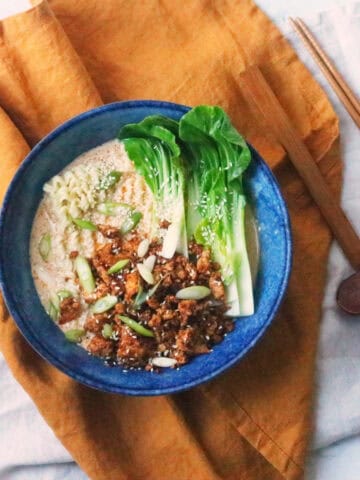
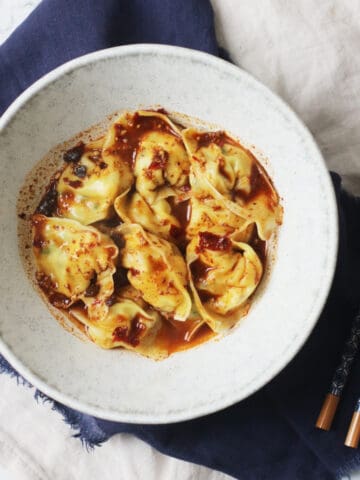
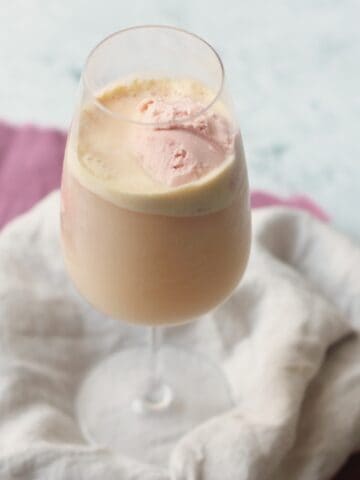
Leave a Reply